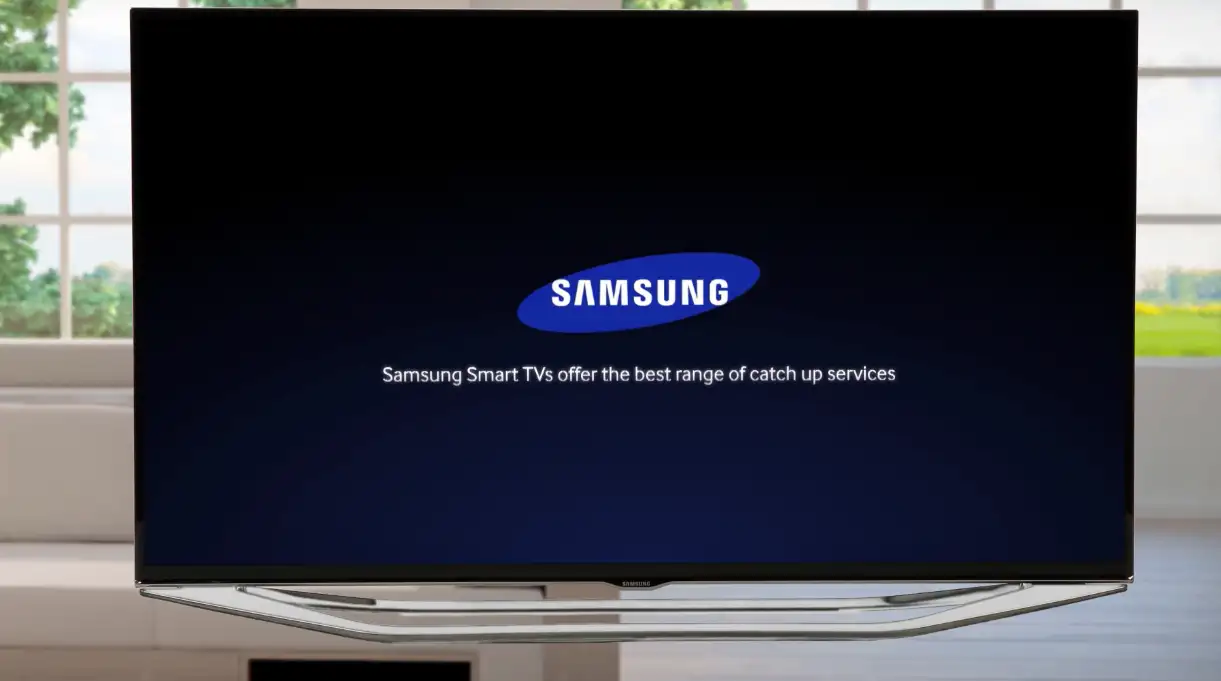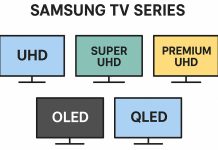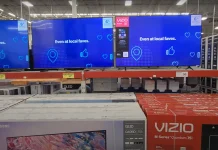In 2014, Samsung introduced two 40-inch TV models — the UE40H7000 and the UE40HU7000. Despite their similar names, these TVs represent different product categories. The most notable difference lies in screen resolution: the H7000 features Full HD (1920×1080), while the HU7000 offers Ultra HD (3840×2160), delivering four times the detail and clarity of Full HD.
Key Differences Between the Models
The UE40H7000 is aimed at users who enjoy 3D content. It supports active 3D technology and can convert 2D content into 3D, providing an immersive viewing experience. The UE40HU7000, in contrast, does not support 3D at all. Instead, it focuses on modern standards and higher resolution. It includes UHD Dimming, which handles local contrast more precisely than the H7000’s Micro Dimming Pro.
Refresh rate is another difference: the H7000 uses 800 Hz Clear Motion Rate (CMR), while the HU7000 goes up to 1000 Hz CMR, resulting in smoother motion handling, especially in fast-paced scenes like sports or action movies. Both models are powered by quad-core processors and offer Smart TV functionality via Samsung’s Smart Hub platform. They include built-in Wi-Fi and an identical number of ports — 4 HDMI and 3 USB. However, the HU7000 has an edge with one HDMI 2.0 port, allowing 4K video playback at 60 frames per second. It also supports the HEVC (H.265) video codec, which is essential for streaming modern UHD content. The H7000 lacks this support.
Physically, the TVs are nearly identical, both supporting VESA 200×200 wall mounts. The HU7000 is slightly thinner (50 mm vs. 66 mm) but also slightly heavier (8.8 kg vs. 8.4 kg). It also consumes a bit more power (approximately 75W vs. 60W). As for audio, both feature 20W stereo sound systems (2×10W) with DTS Premium Sound 5.1, so there’s no major difference in sound quality.
Specification Comparison Table
| Feature | Samsung UE40H7000 | Samsung UE40HU7000 |
|---|---|---|
| Release Year | 2014 | 2014 |
| Screen Size | 40 inches | 40 inches |
| Resolution | Full HD (1920×1080) | Ultra HD (3840×2160) |
| Panel Type | LED | LED |
| Refresh Rate (CMR) | 800 Hz | 1000 Hz |
| 3D Support | Yes (active 3D) | No |
| 2D to 3D Conversion | Yes | No |
| Local Dimming | Micro Dimming Pro | UHD Dimming |
| Processor | Quad Core | Quad Core |
| Smart TV Platform | Samsung Smart Hub | Samsung Smart Hub |
| Wi-Fi | Built-in | Built-in |
| HDMI Ports | 4 (no HDMI 2.0) | 4 (1 with HDMI 2.0) |
| USB Ports | 3 | 3 |
| HDMI-CEC (Anynet+) | Yes | Yes |
| HEVC (H.265) Support | No | Yes |
| Audio Output | 20W (2×10W), DTS Premium Sound 5.1 | 20W (2×10W), DTS Premium Sound 5.1 |
| Tuners | DVB-T/C/S2 | DVB-T/C/S2 |
| VESA Mount Compatibility | 200×200 mm | 200×200 mm |
| Power Consumption | ~60W | ~75W |
| Dimensions (W×H×D) | 906×528×66 mm | 906×524×50 mm |
| Weight (without stand) | 8.4 kg | 8.8 kg |
| Estimated Price | $200–300 cheaper | $200–300 more expensive |
Conclusion and Recommendation
If you’re interested in 3D content and don’t consider 4K resolution a priority, the Samsung UE40H7000 is a great choice. It delivers a vibrant image, smooth motion, and immersive 3D functionality at a more affordable price. However, if you’re looking for better detail, support for modern formats, and long-term compatibility with new content, the UE40HU7000 is the smarter investment. It offers a 4K panel, HDMI 2.0, and HEVC support, making it future-ready for UHD streaming and playback.
Both models are high-quality for their time, and choosing between them ultimately depends on whether 3D or Ultra HD resolution matters more to you.






